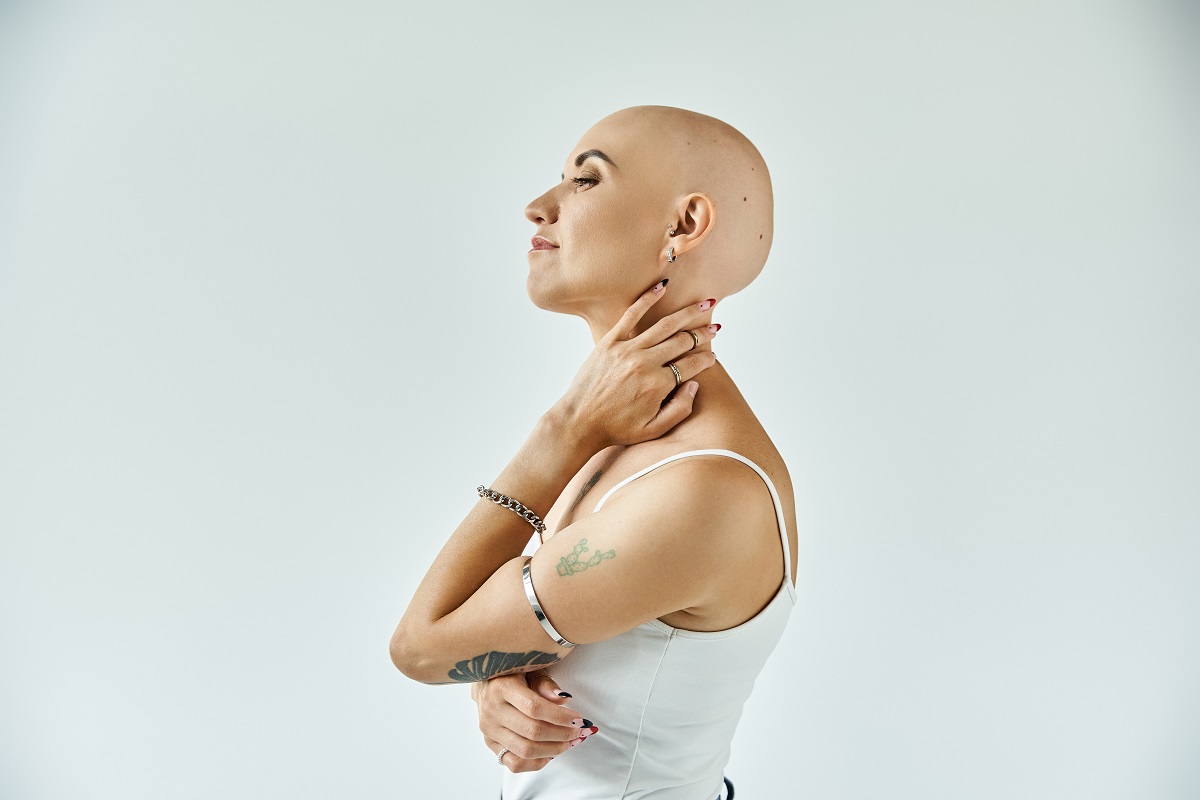A cancer type that develops in the slim tubes (bile ducts) that carry digestive fluid (bile) is called Cholangiocarcinoma or bile duct cancer. This cancer type usually occurs in people over 50 years old but it can happen at any age as well. Healthcare providers classify bile duct cancer into several types based on the location of the cancer. For example:
- Intrahepatic cholangiocarcinoma – It happens in the bile duct part located within the liver. That’s why in some cases, it is classified as a liver cancer type.
- Hilar cholangiocarcinoma – This type occurs in the bile ducts outside the liver. This type is also called perihilar cholangiocarcinoma.
- Distal cholangiocarcinoma – This form of cholangiocarcinoma appears in the bile duct portion that is nearest to the small intestine. Sometimes, it is known as extrahepatic cholangiocarcinoma.
In most cases, this cancer type is diagnosed in advanced stages, which makes it challenging to get a successful treatment.
Symptoms
- Extreme tiredness (fatigue)
- White-colored stools
- Persistent itching of the skin
- Jaundice (yellowing of the eyes and skin)
- Pain in the abdomen
- Abnormal weight loss
- Fever
- Night sweats
- Dark urine
If you experience extreme tiredness, jaundice, or abdominal pain continuously, do not hesitate to see a doctor.
Causes
The following factors may elevate your risk of developing cholangiocarcinoma. Examples include:
- Primary sclerosing cholangitis – This is a health condition in which scarring and hardening of the bile ducts occur.
- Chronic liver disease – A history of chronic liver disease increases the risk of cholangiocarcinoma due to scarring of the liver tissue.
- Congenital bile duct problems – Sometimes, problems with the bile duct are present at birth. It is caused by a choledochal cyst that causes widening and irregular bile ducts. As a result, the risk of cholangiocarcinoma increases.
- Liver parasites – These parasites can pass to humans through raw or undercooked fish, which is common in Southeast Asia.
- Age – People over 50 years old are more prone to develop this cancer type.
- Smoking – Tobacco products are associated with an increased risk of getting cholangiocarcinoma.
- Diabetes – High risk of cholangiocarcinoma also have people with either type 1 or 2 diabetes.
- Inherited health conditions – There are some DNA mutations (changes) that may pass from biological parents to biological children and cause diseases that elevate the risk of bile duct cancer. For example cystic fibrosis and Lynch syndrome.
How to Prevent Cholangiocarcinoma?
The following tips can help you reduce the risk of cholangiocarcinoma. Examples include:
- Quit smoking or never start – Those who use tobacco products are at increased risk of developing cholangiocarcinoma. If you cannot quit smoking, consult with your doctor about smoking cessation strategies.
- Try to decrease the risk of liver disease – People with chronic liver disease also are at increased risk of developing cholangiocarcinoma. That’s why it is very important to take care of your liver. For example to lower the risk of cirrhosis (liver inflammation) limit or avoid alcoholic drinks, try to get and maintain a healthy weight, and reduce exposure to chemicals you may work with by following safety instructions.
Diagnosis
Healthcare providers usually perform the following tests to diagnose cholangiocarcinoma. Examples include:
- Liver function tests – These involve blood tests that help doctors determine the liver function and potential causes of symptoms.
- Tumor marker test – Doctors perform this test to measure the level of carbohydrate antigen (CA) 19-9 in the blood. If you have a high level of CA 19-9 in the blood not necessarily mean you have bile duct cancer but these outcomes may indicate a bile duct disease. These include bile duct inflammation and obstruction.
- Endoscopic retrograde cholangiopancreatography (ERCP) – This test involves a small tube with a camera that is passed down your throat through the digestive tract to the small intestine.
- Imaging tests – These tests are used to get detailed images of internal organs and look for cholangiocarcinoma symptoms. Imaging tests include ultrasound, CT (computerized tomography) scans, and MRI (magnetic resonance imaging) combined with magnetic resonance cholangiopancreatography (MRCP).
- Biopsy – During this procedure, doctors will take a small sample of tissue for examination. Physicians can get a sample of tissue during ERCP or using a small needle through the skin to the affected area (fine-needle aspiration). The way your doctor gets the tissue sample influences the treatment option available later for you. For instance, if your doctor uses a fine-needle aspiration, you become ineligible for liver transplantation.
Once a person is diagnosed with cholangiocarcinoma, doctors can perform additional imaging tests to determine the stage of the cancer. Staging the cancer helps doctors make an effective treatment for you.
Treatment
Healthcare professionals usually prescribe the following treatment options for people with cholangiocarcinoma. Examples include:
Surgery
Not every time it is possible to treat this cancer type by surgery but when it is possible surgeons will remove as much of the cancer as they can. Sometimes, the affected area is so small that surgeons remove a part of the bile duct. If you experience advanced cancer, doctors may also remove certain nearby tissues of the pancreas, liver, or lymph nodes.
Liver Transplant
This treatment option is effective for people with hilar cholangiocarcinoma. The transplantation organ is usually obtained from a donor. However, this procedure increases the risk of recurrence of the cancer. Discuss with your doctor about the risks and benefits associated with a liver transplant.
Chemotherapy
This treatment option involves strong medicines that help to destroy cancer cells throughout the body. Physicians recommend these medications for people with advanced cancer stage or before a liver transplant. These medicines are usually given to patients intravenously (IV).
Radiation Therapy
This procedure uses powerful energy beams from protons or X-rays to destroy cancer cells. During radiation therapy, the patient is lying down on a table and a special machinery moves around him/her directing radiation beams (external beam radiation). Sometimes, doctors inject a radioactive material near the cancer (brachytherapy).
Targeted Drug Therapy
This therapy is used to destroy cancer cells by targeting a specific protein in the cancer cells. Before this procedure, doctors usually test your cancer cells, to see if this treatment option is effective for you.
Immunotherapy
This therapy is used to boost the immune system to fight against cancer cells. In addition, cancer cells usually produce a substance that helps hide them from the immune system. Sometimes, immunotherapy is used in patients with advanced cholangiocarcinoma when other treatment options do not work.
Heating Cancer Cells
This treatment option is called radiofrequency ablation and it uses electric current to heat and kill cancer cells.
Photodynamic Therapy
This procedure involves a light-sensitive substance that is injected into a vein. This chemical is accumulating in cancer cells that growing fast. Therefore, doctors direct laser light to these cancerous cells that help destroy them. This therapy can help lessen the symptoms and reduce the growth of cancer. After photodynamic therapy, you should avoid sun exposure.
Biliary Drainage
This procedure is usually recommended by doctors to reduce symptoms of the cancer. It involves a thin tube placed into the bile duct that helps to drain the bile. Sometimes, doctors may recommend bypass surgery to reroute the bile around the cancer.
Additionally, bile duct cancer is very difficult to treat and it is advised to ask your healthcare professional about experience with treating the disease. You should get a second opinion if you have any doubts.
Frequently Asked Questions
Can cholangiocarcinoma be cured?
This cancer type can be cured only if the cancer cells do not spread to other body parts. In such cases, a part or even the entire bile duct may be removed. Consult with your healthcare provider for more details.
What are the primary symptoms of cholangiocarcinoma?
These include:
- Dark urine
- Lack of appetite
- Unusual weight loss
- Jaundice
- Lack of energy or fatigue
If you experience any of the previous symptoms, immediately contact your healthcare professional.
What are the possible complications of cholangiocarcinoma?
If you ignore the symptoms and do not get treatment for this cancer type, it may lead to certain life-threatening complications. For example:
- Liver failure
- Cirrhosis
- Chest infection
- Biliary obstruction
- Metastasis
- Chemotherapy adverse reactions (including hair loss, fatigue, vomiting, nausea, and others)
Ask your healthcare provider if you have additional questions.




